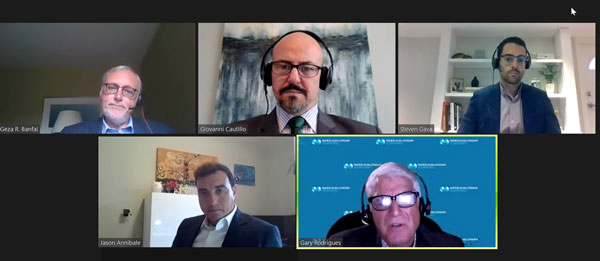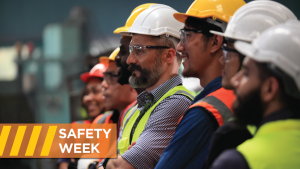How to build a better construction industry from best practices and lessons learned through COVID-19 was the focus of the Ontario General Contractors Association’s first ever webinar, says its new president Giovanni Cautillo.
“Tap into the knowledge base, the wisdom that you have in both your legal counsel and your surety providers,” said Cautillo in his opening comments to the webinar audience. “They will help you through a lot of problems at the onset. Don’t wait until it becomes a problem.
“I hope you understand that their wisdom is worth more than the dollars and cents that you will spend initially to avoid a problem.”
The webinar was billed as Navigating Contracts/Bonding and Risk Relationships Post COVID-19: What Construction Companies must do Differently to Remain Profitable and is the first in a series that was recently launched.
“I’m hoping contractors come away from this with a sense of hope,” stated Geza Banfai, counsel at McMillan LLP.
“There is no question that COVID-19 has challenged construction people right across the spectrum from owners, to GCs to the trades and suppliers. The problem with a stressor like this is that it exposes flaws that are otherwise hidden in the good times. What I’m talking about are things like poor contracts with bad risk allocation, loose construction management practices, cavalier attitudes and approaches to the assumption of risk and then the management of risk,” said Banfai.
“With some firms it pushes them towards the margin of viability and the message in this webinar for this collective group is it doesn’t have to be like this. There are things you can do.”

One of the issues, said Jason Annibale, also of McMillan LLP, is COVID-19 can fall under many categories in a contract.
“I have dealt with many cases where you can characterize COVID-19 as falling under a government shutdown because there was one, a force majeure event, because looking at the definition it clearly is one and owner caused delay because…many owners shut the site down because they were afraid for the safety of their contractors and their workers,” he explained. “You’re dealing with a circumstance where COVID-19 could fit numerous categories with different rights flowing as a result, so that is a weakness in contracts that has been exposed through COVID.”
Gary Rodrigues, leader of construction consulting solutions with Marsh Advisory, said he sees COVID-19 as a stressor that needs to be treated the same as other stressors confronted by companies in the industry, whether it’s a volatile legal climate, risk transfer, technology and the labour shortage.
“To me, I don’t see COVID necessarily as a break the bank stressor, I see it as another major stressor that needs to be managed in similar fashion to all the other things that are in today’s environment,” said Rodrigues.
“Whether you are small, medium or large is the best contractors bet on themselves to control their own destiny. We can’t be paralyzed by the fear because there is always going to be somebody that is trying to get around us, that is trying to move ahead or try to get the upper hand or the competitive advantage.”
Many small- and medium-sized companies struggle liquidity-wise on a good day, he said.
“Now you have COVID coming in and impacting in some great ways the pressure on the balance sheet. My suggestion with COVID is to not look at it like its suddenly there, is this big boulder or a fork in the middle of the road. We have to make new decisions because you have to begin to manage its impacts in ways that we’re already managing those other stressors.
“It’s increased safety, more focus on the schedule, paying closer attention to contracts that you have.”
He suggested using a seven-step process with the acronym SUSTAIN — safety and security, update your schedules, study your contracts (with the help of your attorneys and brokers), track your costs, accumulate documentation, identify and mitigate and notification requirements.
Managing cash flow and liquidity coming out of COVID may be a challenge for contractors said Steven Gava, client executive at Marsh Canada Limited.
“With the Ontario government committing to sticking to its pre pandemic pipeline of major P3 projects, potential stimulus spending at municipal levels but partnered with the financial strain of the global economic pandemic that we’re in, the surety industry and the construction industry are asking ourselves how do we as contractors move forward and balance these potential needs for more credit support from providers like sureties while managing the balance sheet that is potentially at its most vulnerable position,” said Gava. “Don’t be hesitant to be transparent and increase your communication and co-ordination with your creditors because it’s only going to benefit you in the long run.”
Sureties and creditors are focusing on supply chain management and subtrade procurement more than they were prior to the pandemic.
“I’m sure there are contractors on this call who have had those tough conversations with their broker and their surety about bonding back a trade,” said Gava. “It’s becoming a reality and we’ve seen GCs make their own cognizant decision to bond back a major subtrade or at least instil some form of subtrade risk management strategy. We’re not even seeing it being asked of by the surety market at this time.”
Follow the author on Twitter @DCN_Angela.











Recent Comments
comments for this post are closed